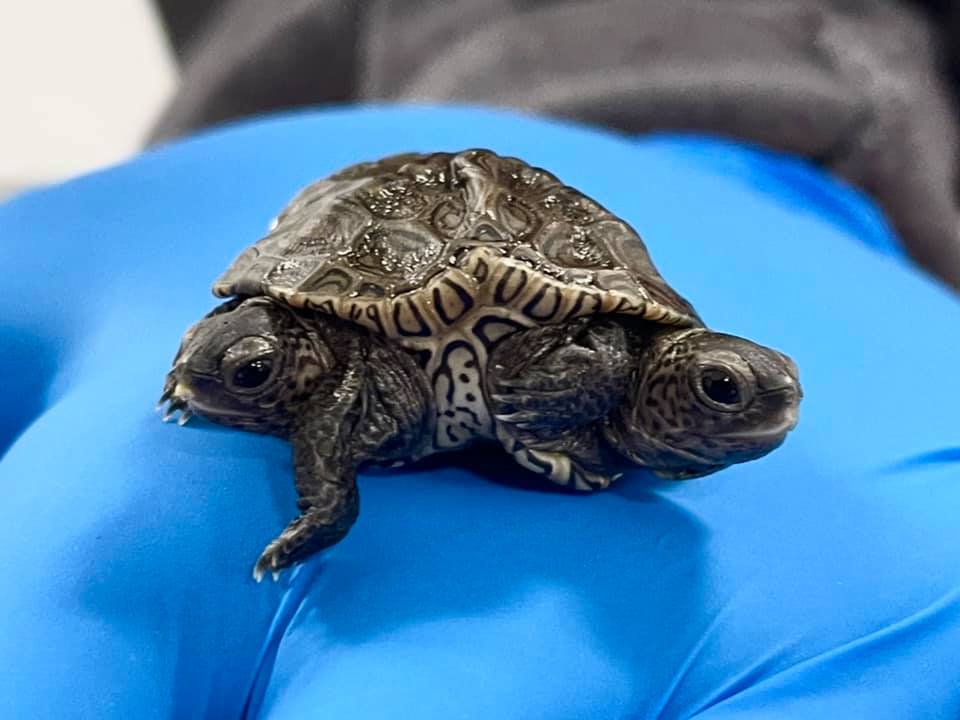Rare conjoined turtles hatched in Massachusetts
Against all odds, the fused siblings are thriving.

Conjoined turtles with two heads and a single body have hatched at a Massachusetts wildlife center. Against all odds, the fused siblings are thriving.
The baby turtles, diamondback terrapins (Malaclemys terrapin), are "very alert" and "active," according to a recent Facebook post from the New England Wildlife Center's Cape Cod branch. "Animals with this rare condition don't always survive very long or live a good quality of life, but these two have given us reason to be optimistic."
Genetic or environmental factors that influence the embryos as they develop can cause the condition known as bicephaly, or having two heads. Living animals with bicephaly are extremely rare because many don't survive, Live Science previously reported. Some other examples include a two-headed viper discovered in Virginia, a two-headed deer found dead in Minnesota and a two-headed porpoise taken out of the North Sea.
Related: The 12 weirdest animal discoveries
The baby turtles hatched in a protected nesting site in Barnstable, Massachusetts. The wildlife center has been taking care of them for a little over two weeks, and the turtles continue to be "bright and active," according to the Facebook post.
The wildlife center has used X-rays to learn more about how the turtles navigate the world. It seems that they have two spines that merge further down the body and that each turtle has control of three legs.
In the first couple of days after hatching, the turtles got their nutrition from the same yolk salk. By giving the turtles a white powder that can be visualized on X-rays of the gastrointestinal (GI) tract, the researchers found that each turtle has a separate GI tract. One of the GI tracts seems a bit more developed, but both turtles are eating and digesting food.
Get the world’s most fascinating discoveries delivered straight to your inbox.
A deep-water swim test showed that the two siblings can coordinate swimming to the surface to breathe. The two are eating, swimming and gaining weight. "It is impossible to get inside the heads of these two, but it appears that they work together to navigate their environment," according to the post.
The researchers hope to get the turtles a CT scan once they're a bit older to learn more about the internal organs and structures they share. "There is still so much to learn about them," the wildlife center wrote in the post.
Originally published on Live Science.

Yasemin is a staff writer at Live Science, covering health, neuroscience and biology. Her work has appeared in Scientific American, Science and the San Jose Mercury News. She has a bachelor's degree in biomedical engineering from the University of Connecticut and a graduate certificate in science communication from the University of California, Santa Cruz.


